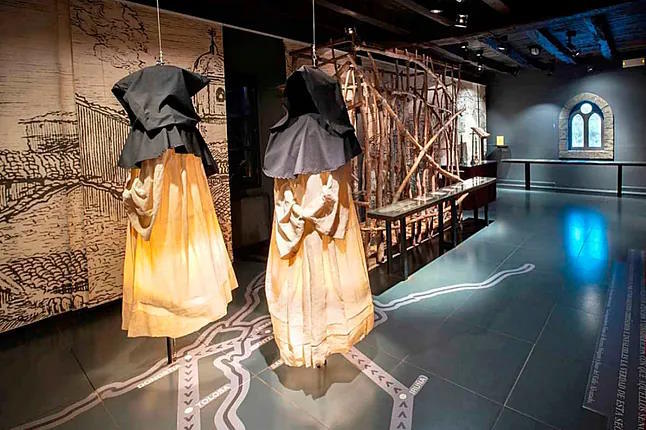From Madrid or Navarra or Castellón, we explore some of the points of the national geography in search of the most fascinating myths and legends.
The witch covens and the Inquisition
The first of the legends we delve into is located in Zugarramurdi, in the Pyrenees of Navarra. It is one of the most famous witchcraft cases in Spain, and although there are different versions, all are based on a real event. The process was carried out by the Inquisition of Logroño between November 7 and 8, 1610. At that time, 18 people were pardoned from their accusations of satanic witchcraft or black magic by confessing their guilt, while 11 others who did not admit the facts were sentenced to die burned alive, although some had already died before the pyre. Their sin was to gather to worship in covens to the goddess of the earth who inhabited the caves and forests of the area, among other things. Since then, Zugarramurdi is known as "the village of the witches," and some claim that their spirits still linger in these lands...
The Templar footprint of the Papa Luna castle
The Order of the Templar knights was the protagonist of countless mysteries in the national territory. Even today, it still is. Not in vain, it is believed that some of their treasures still remain hidden in our country. Such as the true cross on which Jesus Christ died, the Tables of the Law, where the 10 commandments collected by Moses were recorded, or a manuscript of King Solomon himself. In Spain, the legends and mysteries that hover over the ancient domains of these Crusade lords do not cease. For example, it is said that in the castle of Papa Luna, in the town of Peñíscola, in Castellón, many of their jewels are found, brought from Paris when this military order had to leave France.
Concentration of telluric forces
Another municipality in Castellón related to the Templars is Culla, filled with extraordinary telluric energies since the Crusade lords took over this lordship by paying the amount of 500,000 Valencian royal sueldos, a monetary reference of the time. In fact, this was their last acquisition before the disappearance of the Order in 1314. Various studies indicate that the Valencian population represents one of the Templar markings on the Iberian Peninsula, or, in other words, the angles of their cross. Hence the energetic forces that concentrate in this beautiful medieval town with cobbled streets.
The ghost of the House of the Seven Chimneys
There are many legends surrounding the House of the Seven Chimneys, located in the central Plaza del Rey of Madrid. One of them talks about the nickname, as it would represent the seven deadly sins. They say that its architect, Antonio Sillero, would have been thinking about it when he built it between the years 1574 and 1577 for Pedro de Ledesma, head of the Council of the Indies and right-hand man of Antonio Pérez, Secretary of the Chamber of Felipe II. Not in vain, another of the myths surrounding this building, one of the few examples of civil architecture of the 16th century in the capital, is that it served as a house of confinement for an illegitimate daughter of the king himself. There is more, as its ghost would continue to wander the premises and would not give up appearing from time to time.
